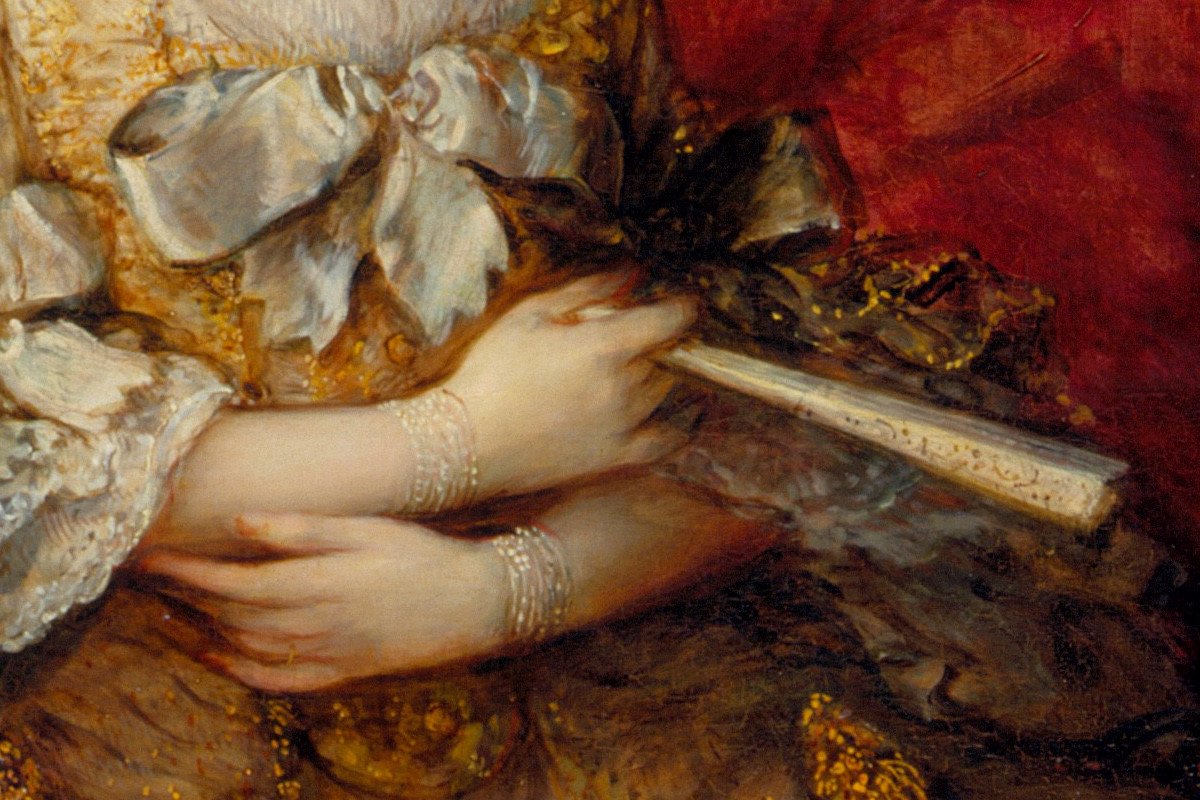
On Friday, this year’s summer exhibition at Buckingham Palace officially opens, and there are some really interesting—and really old!—royal jewels on display as part of the show.
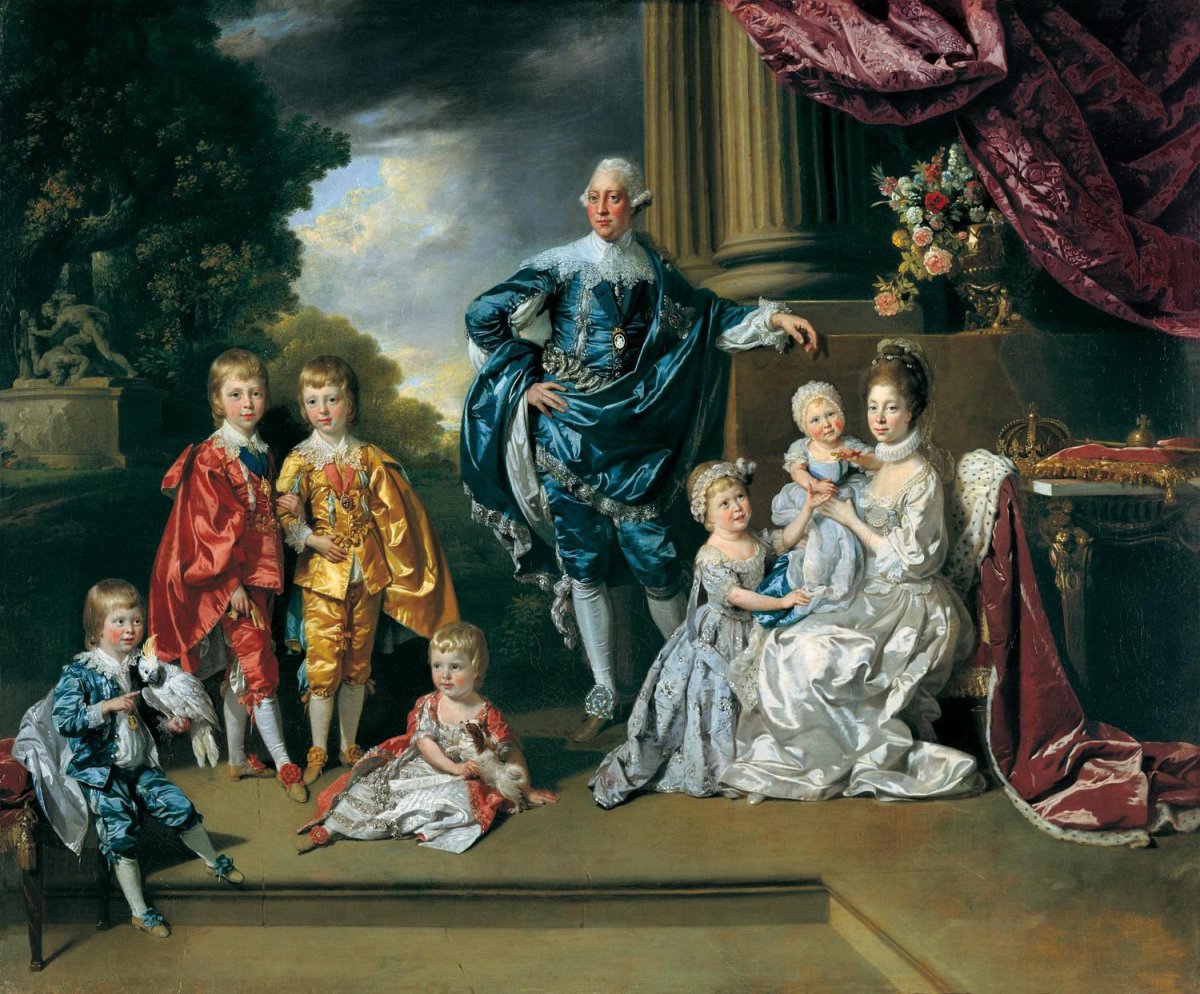
Visitors can experience Style & Society: Dressing the Georgians when they visit the Queen’s Gallery at Buckingham Palace from April 21-October 8 this year. The exhibition covers the lives, loves, and attire of the Hanoverians, from the accession of George I in 1814 to the death of George IV in 1830. (William IV has been excluded from the chosen time period because the style of the early 1830s is more closely linked to the Victorian era that immediately followed.) Portraits by artists like Zoffany and Gainsborough are presented alongside clothing, jewelry, and other surviving artifacts from the Georgian period. As you might expect, many of the pieces included are connected to King George III (who reigned from 1760 to 1820, including the regency period) and Queen Charlotte, as well as their fifteen children.
There are relatively few pieces of jewelry in the Royal Collection from the Georgian era, at least compared with the jewel-rich Victorian and Edwardian periods that followed. This is partly because the heirloom jewels that belonged to Queen Charlotte were lost to the descendants of her fifth son, King Ernst August of Hanover, in the Hanoverian Claim of the 1850s. But it’s also because the accessories that the Georgians wore were a little different than the pieces that are still wearable today. And the Victorians also loved to remove the stones from dismantled Georgian pieces and use them to make new jewelry—reduce, reuse, recycle.
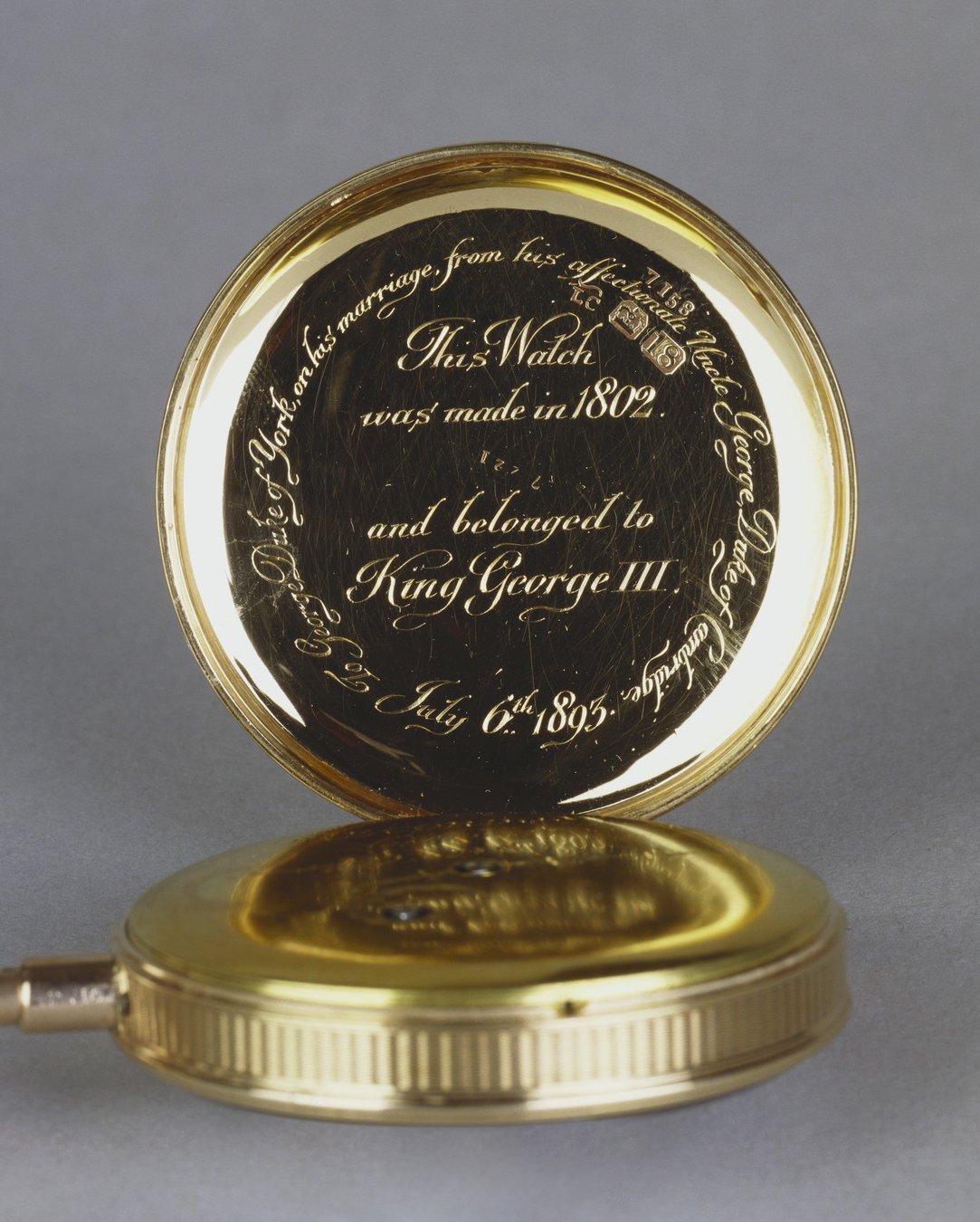
The Hanoverian jewelry included in the Style & Society exhibition includes necklaces, bracelets, and rings, as well as “useful” accessories like watches, chatelaines, and fob seals. Pictured above is a watch from the exhibition that belonged personally to King George III. As the engraved inscription notes, the watch dates to 1802. It later passed into the collection of George III’s seventh son, Prince Adolphus, Duke of Cambridge, and then was inherited by his son, Prince George, Duke of Cambridge.
In 1893, George Cambridge gave the watch to Prince George, Duke of York as a wedding present. These two Georges were cousins, but in the inscription, the Duke of Cambridge refers to himself as the Duke of York’s “affectionate uncle”—in part because the Duke of York (the future King George V) was marrying the Duke of Cambridge’s niece, Princess Mary of Teck (the future Queen Mary).
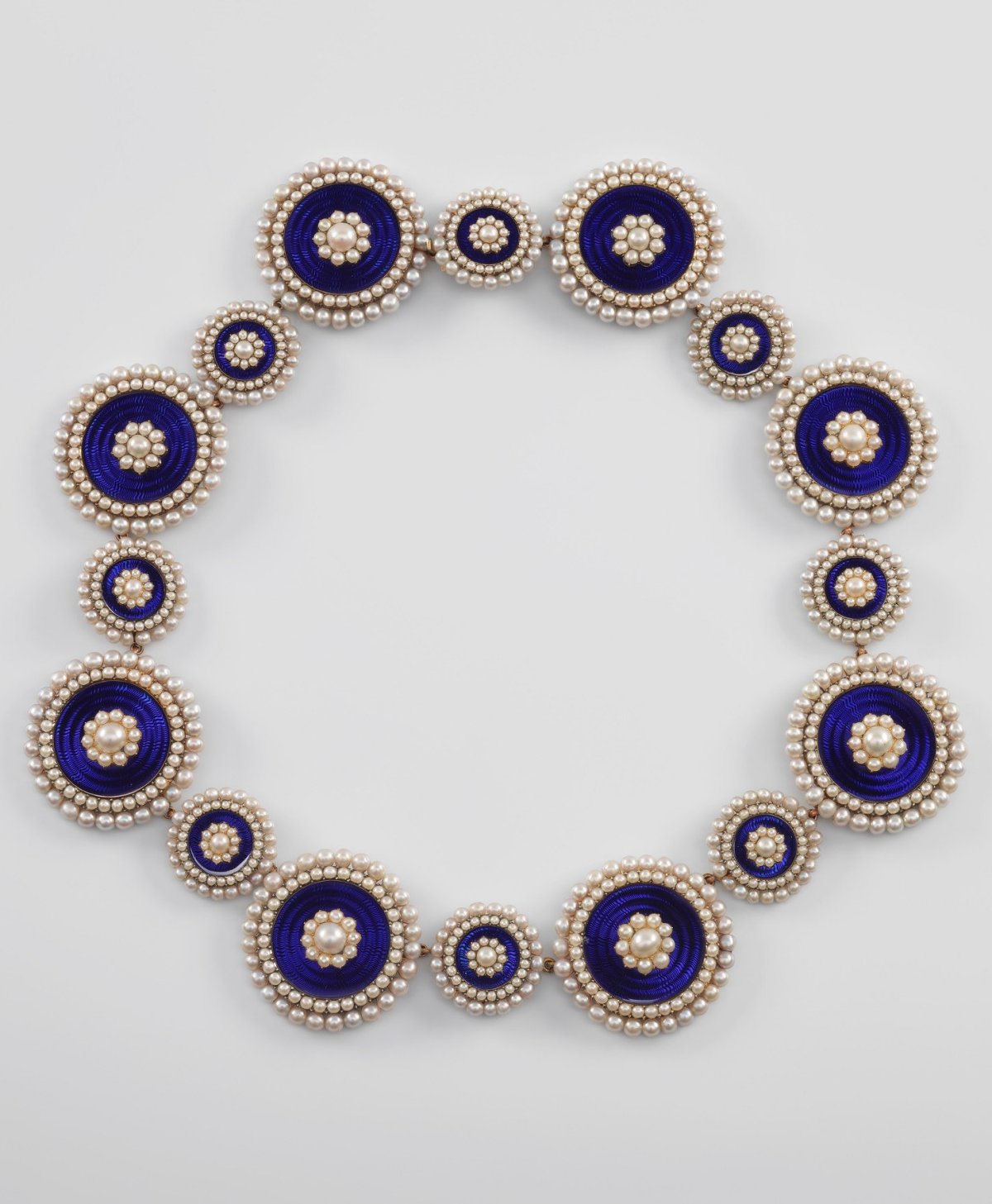
One of the pieces from the exhibition that caught my eye was this unusual necklace. It’s made from a set of enamel, gold, and pearl buttons that were once set on a dress coat that belonged to George III. The Royal Collection notes that it was part of a demi-parure of jewelry that also included a bracelet, three brooches, and a pair of earrings. In 1818, the necklace was given to (or possibly commissioned by) his daughter-in-law, Princess Adelaide, Duchess of Clarence (later Queen Adelaide). She left it to one of her Cambridge nieces, Grand Duchess Augusta of Mecklenburg-Strelitz, who in turn bequeathed it to Queen Mary.
(One of the most striking things made clear by these Royal Collection exhibitions is just how essential Queen Mary was to the assembling—inheriting, purchasing, reacquiring, etc.—of the collection itself. The anecdotes about Mary pressuring people to give her various objects are highly exaggerated, but she was a keen and skilled collector who certainly valued historical artifacts.)
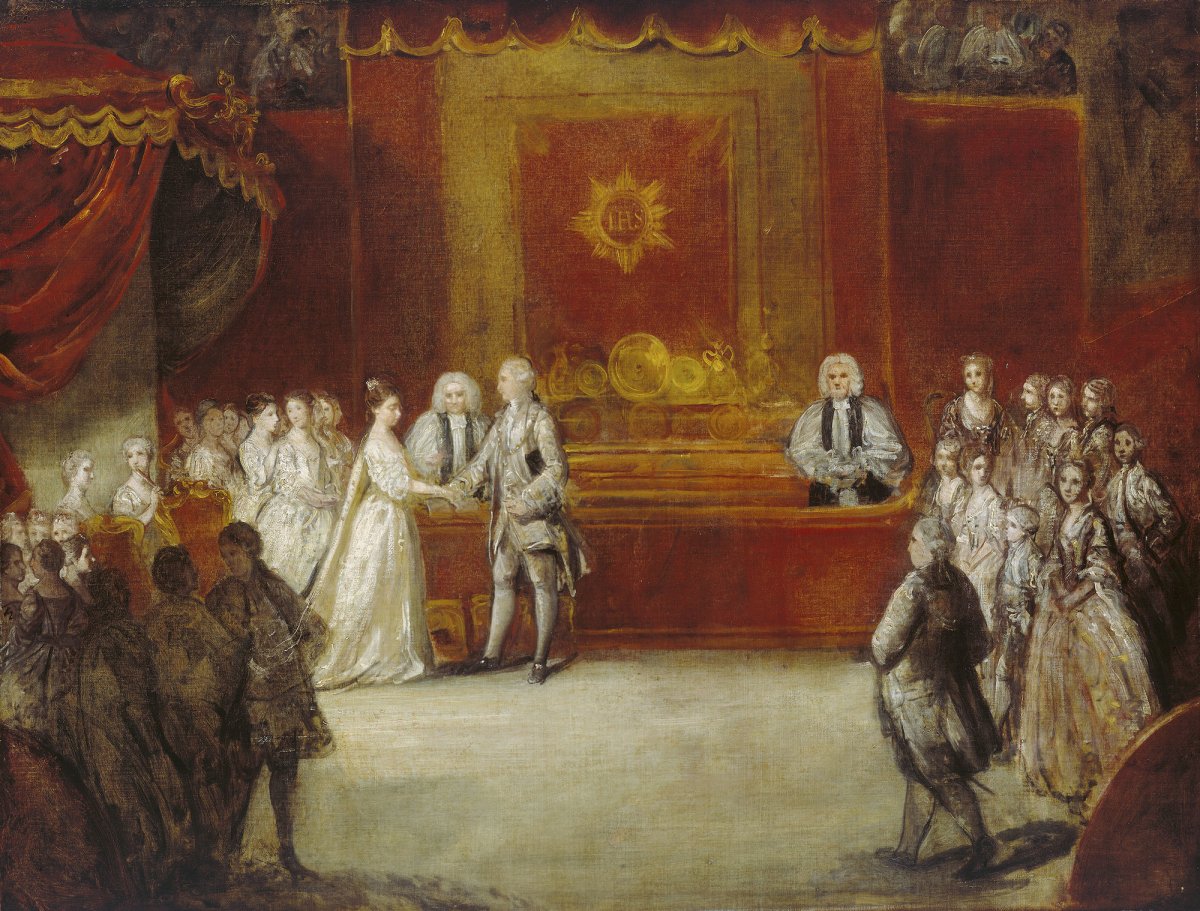
As I mentioned above, many of the jewels worn by Queen Charlotte were returned to the extended family in Hanover after Queen Victoria lost a lawsuit in the 1850s. But some pieces of her jewelry survive in the collection, including several important rings that are included in this summer’s exhibition. These include two rings that she received when she married George III on September 8, 1761, just a few hours after arriving in Britain from her native Mecklenburg-Strelitz.
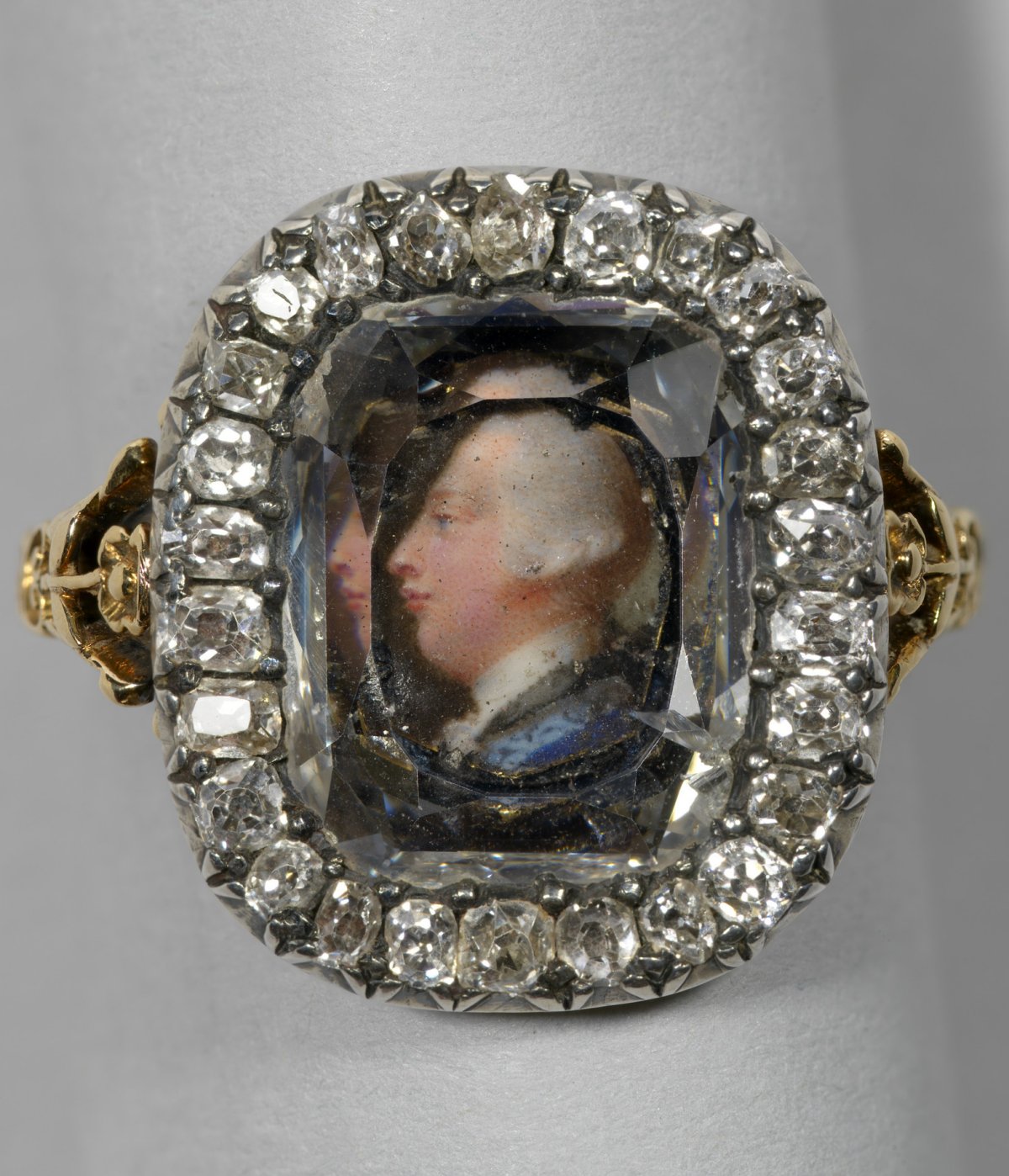
George gave Charlotte a treasure trove of jewelry to celebrate their marriage. Among the numerous pieces was this ring, which features a miniature painting of George set under a flat-cut diamond, surrounded by diamond brilliants. After Charlotte’s death in 1818, the ring left royal hands, but those avid collectors King George V and Queen Mary managed to reacquire during their tenure as Prince and Princess of Wales. On November 9, 1909, they presented it to King Edward VII as a birthday present. He passed away just a few months later, so the ring ended up being one of the final presents they ever gave him.
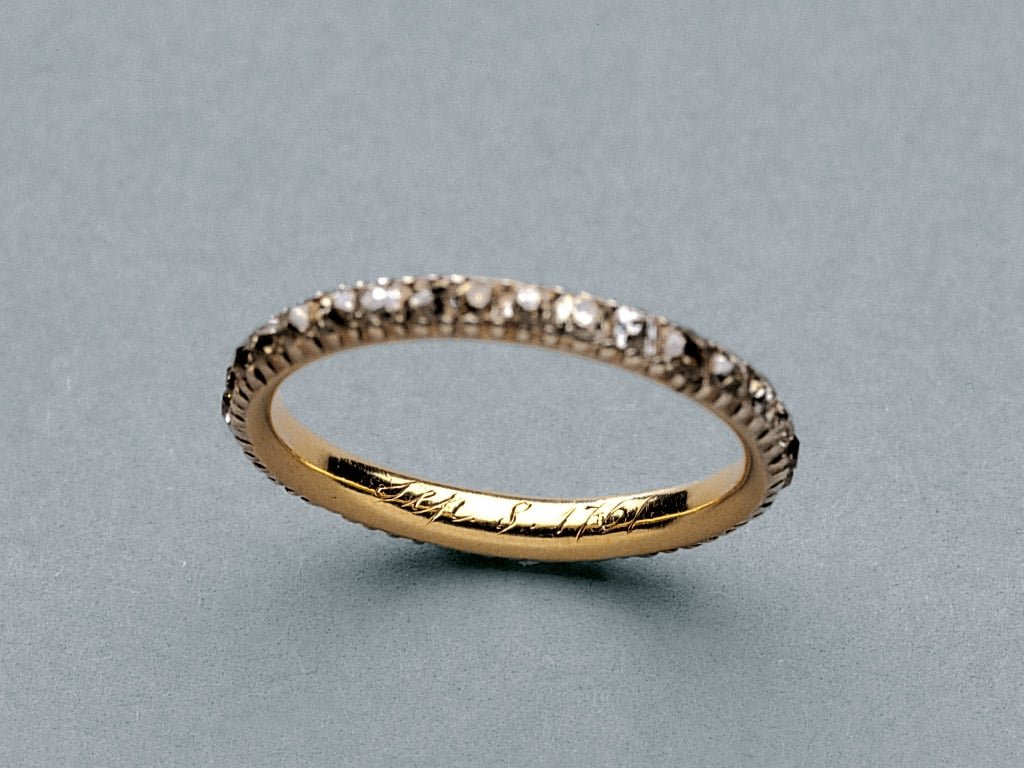
King George III also presented his bride with a simple gold ring set with diamonds and engraved with their wedding date. The Royal Collection notes that this was a “keeper ring,” designed slightly small to act as a guard and prevent a larger (and more valuable) ring from sliding off the wearer’s finger. Interestingly, though, Charlotte didn’t use it for its intended purpose, wearing it alone instead. Indeed, numerous portraits of Queen Charlotte show her wearing only one slim gold ring on her fingers—this particular wedding ring. After Charlotte’s death, this ring was inherited by her eldest daughter, Queen Charlotte of Württemberg, who bequeathed it to Queen Victoria ten years later.
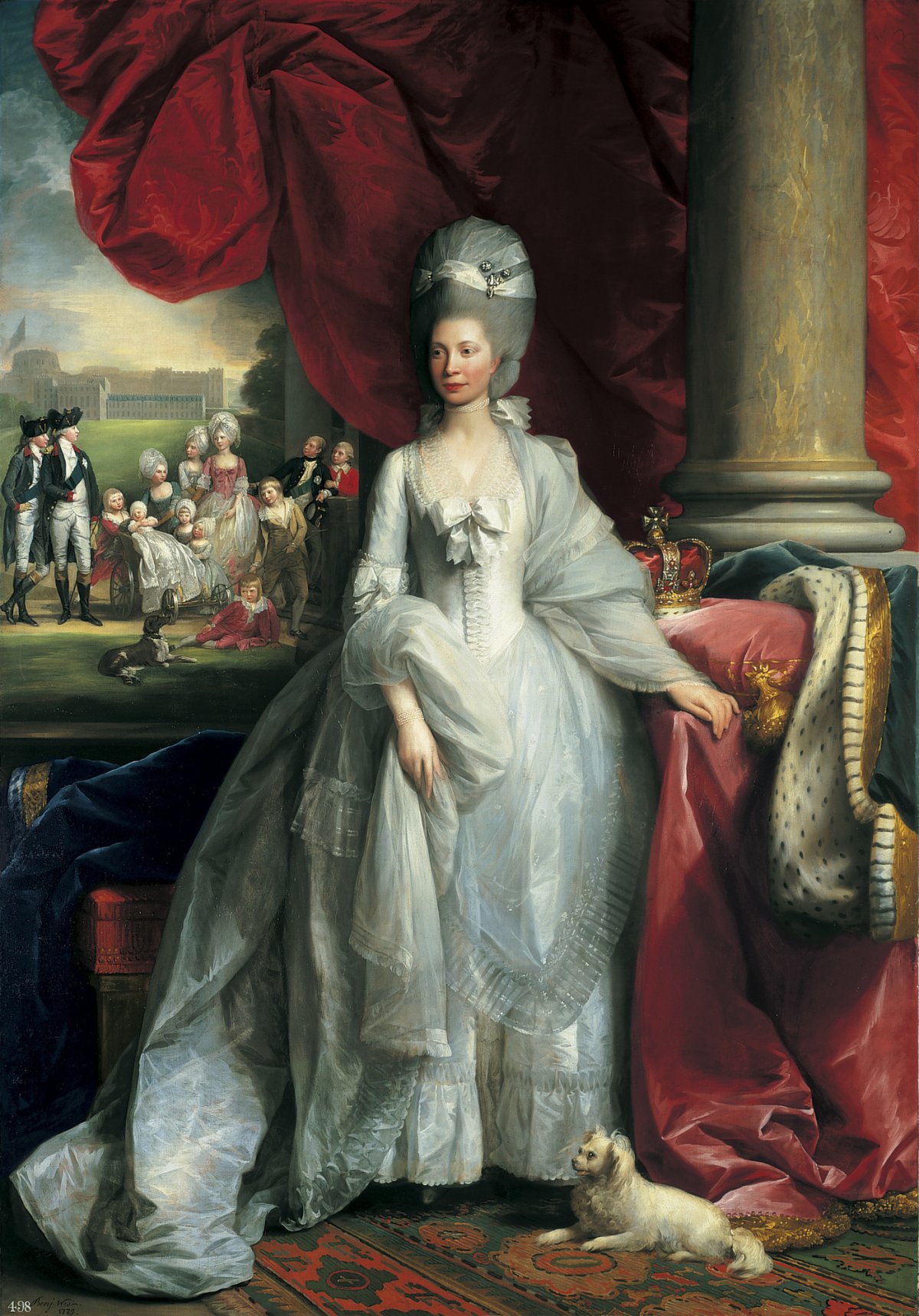
Queen Charlotte was Britain’s queen consort for a remarkable 51 years. During that time, she gave birth to fifteen children, including King George IV, King William IV, King Ernst August of Hanover, and Queen Charlotte of Württemberg. The family spent much of their time at Windsor Castle, which you can see in the background of this Benjamin West portrait from 1779.
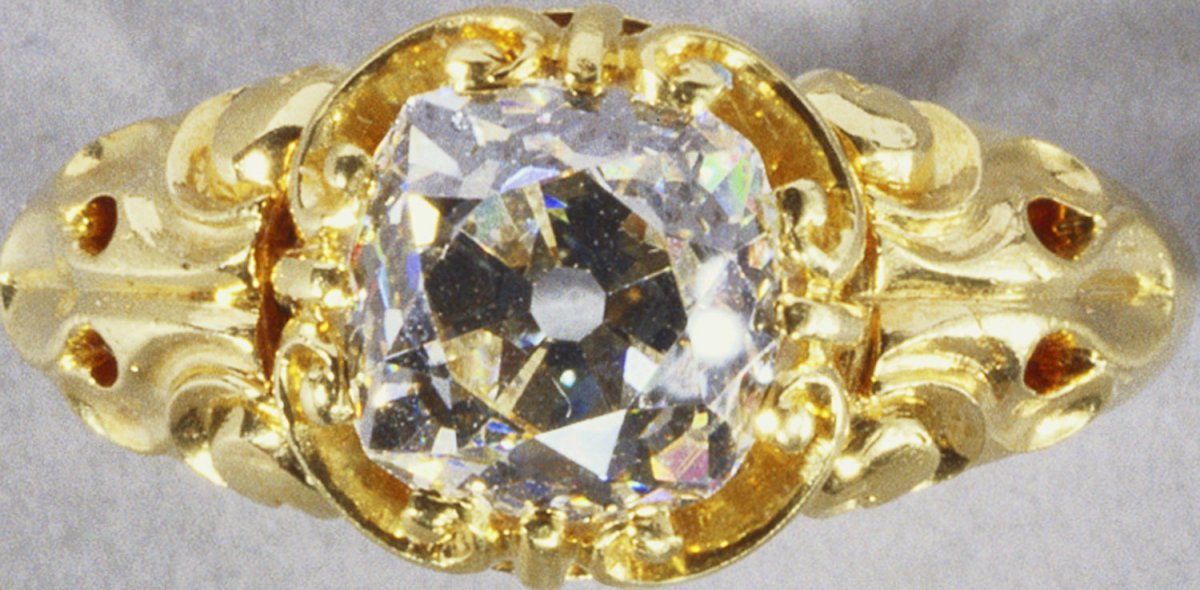
Charlotte may have primarily worn her keeper ring, but she also had many other rings in her collection. The exhibition includes two of them. This is a gold ring set with a cushion-cut diamond, dating to 1810, near the end of Charlotte’s life. It ended up with one of her younger daughters, Princess Mary, Duchess of Gloucester and Edinburgh, who was often with her mother during her final years. In 1849, Mary gave the ring to her niece, Queen Victoria.
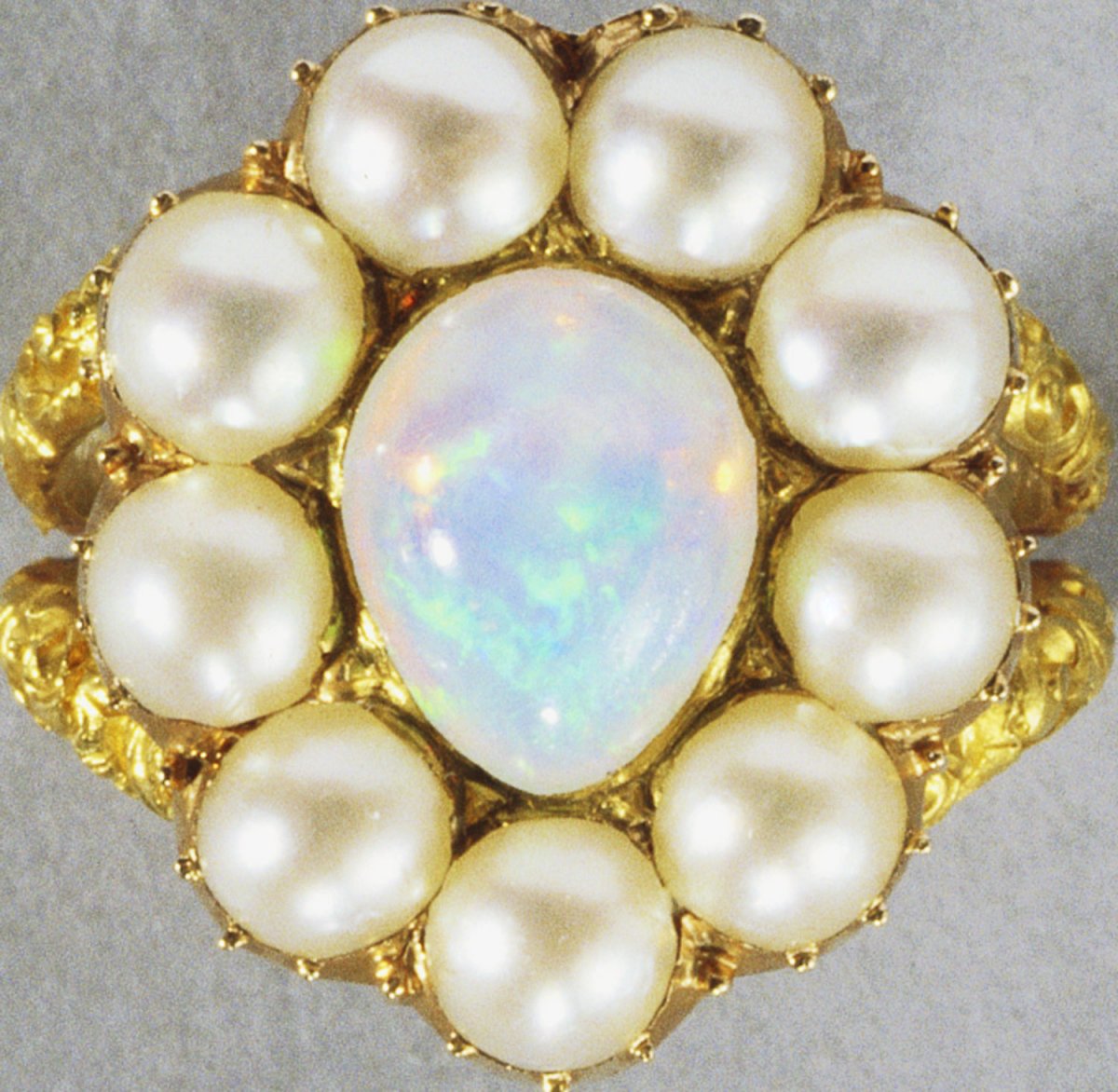
This gold, pearl, and opal ring also belonged to Queen Charlotte, and it also made its way from Princess Mary to Queen Victoria in 1849.
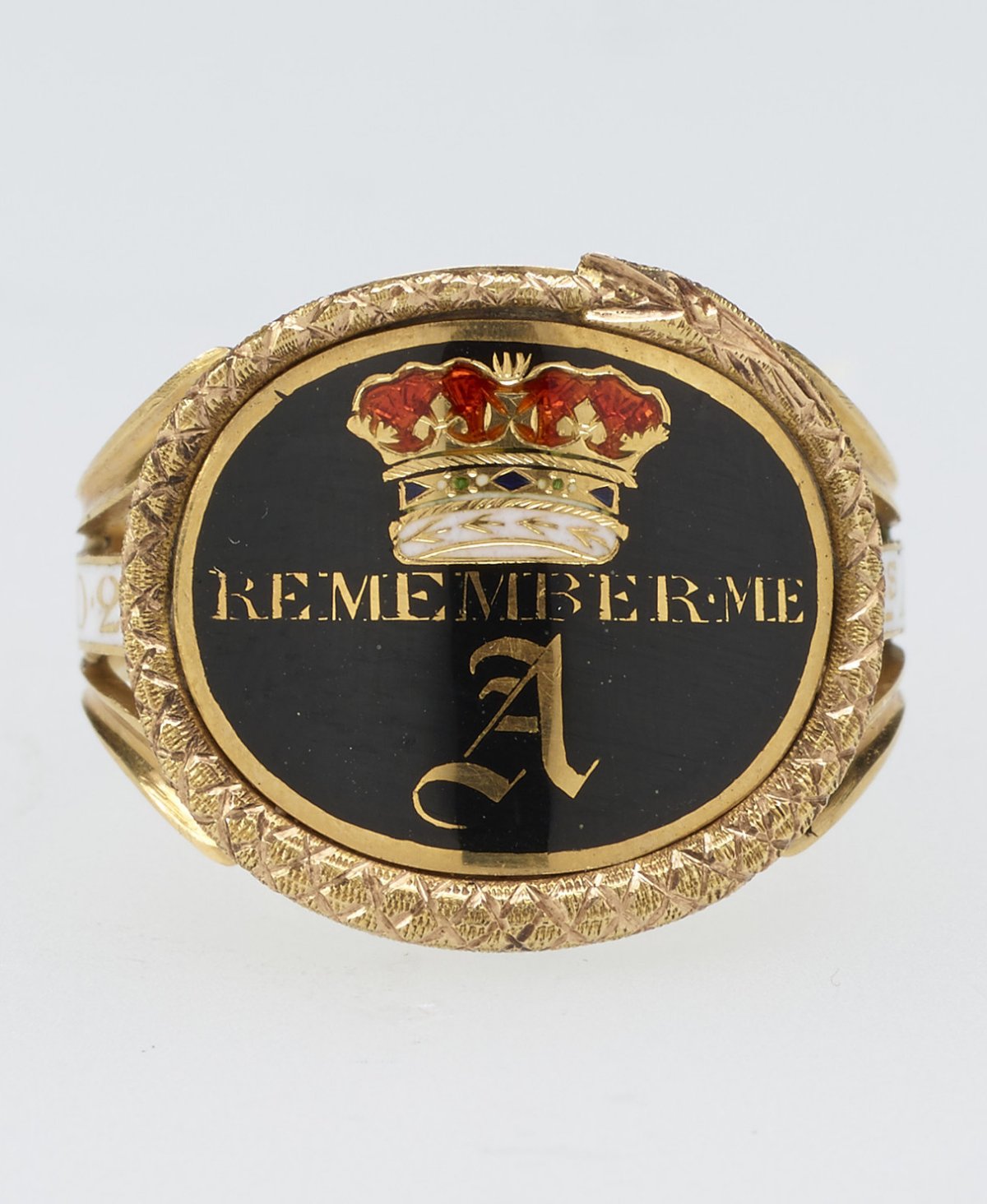
The exhibition also includes numerous pieces of memorial and remembrance jewelry. These pieces gained major popularity in the Victorian era, but the Georgians loved them, too. This gold and enamel mourning ring is a tribute to Princess Amelia, George III and Charlotte’s youngest child, who died in 1810. The design of the ring includes an ouroboros—a serpent swallowing its own tail—which is a symbol of infinity.
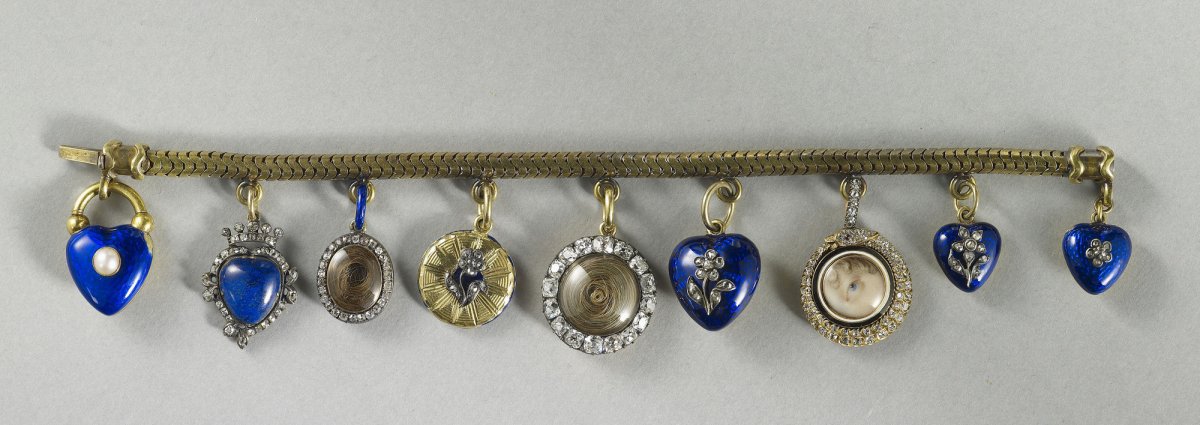
This unusual bracelet also has elements of remembrance in its design and composition. The gold bracelet has nine locket charms made of enamel, diamonds, gold, rubies, and pearls. Six of the lockets contain locks of hair, two of them are empty, and the third contains a miniature painting of a woman’s left eye. The eye belongs to Princess Charlotte of Wales, daughter of King George IV, who died tragically in childbirth in 1817. The miniature is surrounded by an ouroboros border, representing eternity, suggesting that it was made after the death of the late princess. The bracelet belonged to Princess Mary, Duchess of Gloucester and Edinburgh. She bequeathed the jewel to her sister-in-law, Princess Augusta, Duchess of Cambridge, and from her it passed to her granddaughter, Queen Mary.
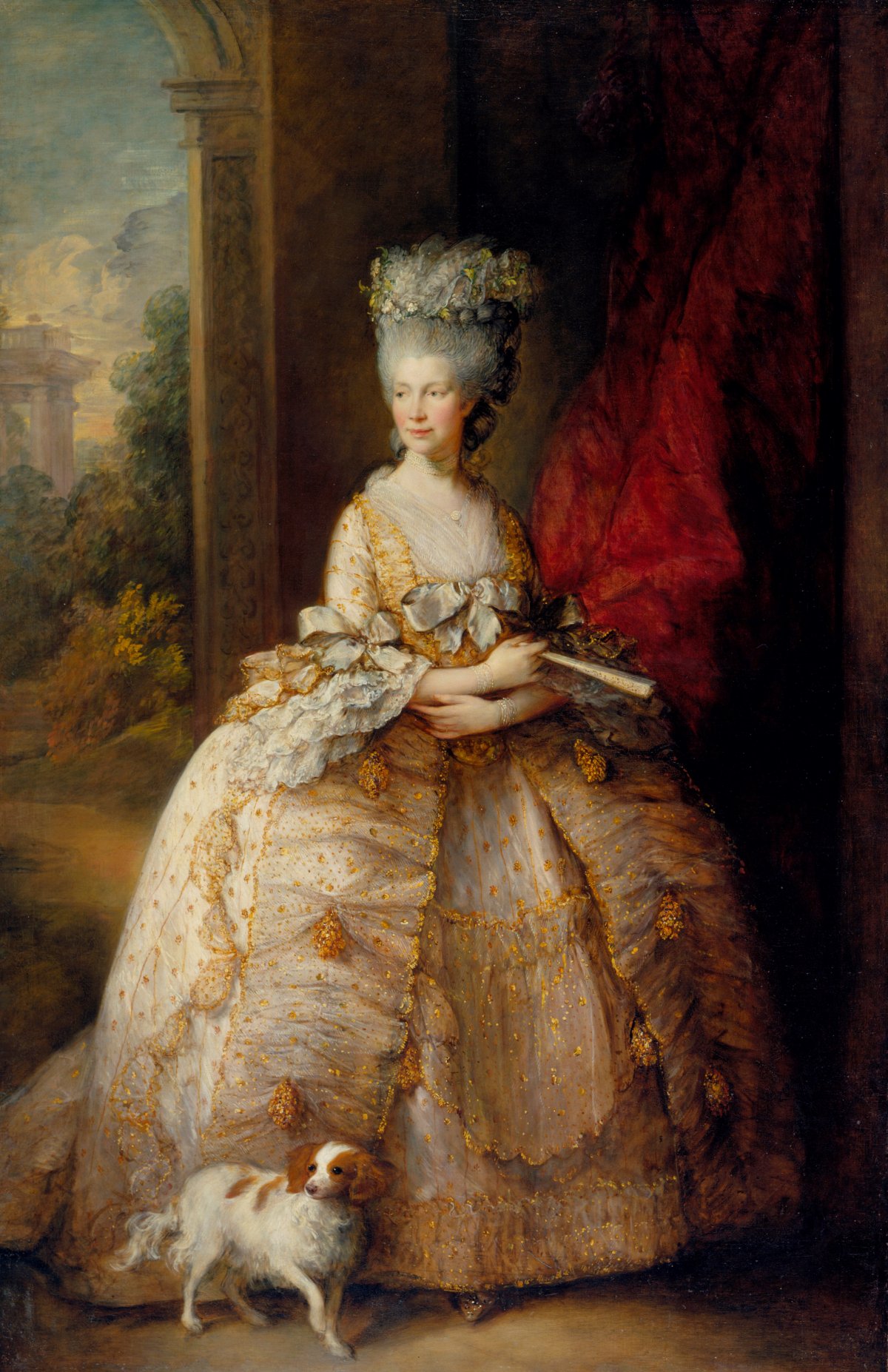
That’s just a selection of the items that will be on display this Friday at the Queen’s Gallery, Buckingham Palace. Handily, the exhibition also coincides with the debut of the Netflix fantasy soap opera about King George III and Queen Charlotte. I’m guessing that show, like its Bridgerton predecessor, will lean much more on inventive and anachronistic jewelry styles than on historical accuracy—but that’s just part of the genre it belongs to. To get your fix of the real style of the Hanoverians, the Style & Society exhibition will certainly fit the bill. Tickets for the exhibition are on sale now!
Leave a Reply
You must be logged in to post a comment.